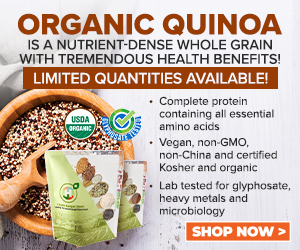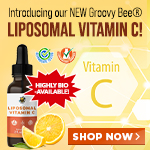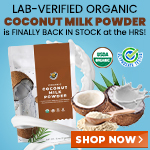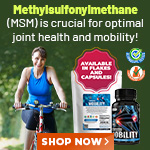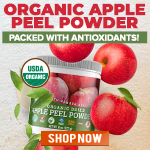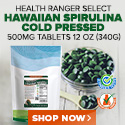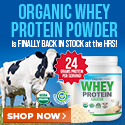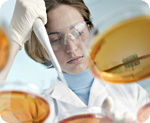
Edible Plastic Wrap for Food Kills Bacteria While It Flavors Your Burger
Tuesday, May 06, 2008 by: Cathy Sherman
Tags: food packaging, plastic wrap, health news
- Oncologist warns of ‘terrifyingly aggressive’ cancers in children, linked to immune suppression from COVID vaccines
- NIH study, buried for decades, reveals that Flu Shots INCREASE elderly deaths, not prevent them
- COVID-19 scandal linked to CANCER SURGE: Billionaire researcher sounds alarm
- Musk targets “strangely wealthy” lawmakers in DOGE probe, names Pelosi, McConnell, Schumer
- Health Ranger Report: Ashton Forbes discusses TELEPORTATION ORBS and their role in MH370 disappearance
- Trump administration CUTS FUNDING to Gavi, the Vaccine Alliance - a major blow to the Bill Gates-backed entity
- Ancient kitchen secrets REVEALED: How garlic, ginger and green onions fight cancer and heart disease
- DARPA: The shadowy innovator behind the world’s most advanced military technologies
- Millionaire fitness coach charged in Tesla vandalism incident as anti-Musk attacks escalate
- “Ethically sourced” human “bodyoids” could usher in a new era of medical exploitation, raising disturbing ethical questions
- Newly released JFK files reveal Pentagon's role in creating Lyme disease and covid in the same lab
- European Court of Justice: Healthcare professionals who promoted or administered COVID-19 vaccines are CRIMINALLY LIABLE for any harm caused
- Britain’s descent into police state censorship: Parents raided for questioning their daughter’s school system online
- RFK Jr. is pushing Big Pharma ad ban - and corporate media is panicking
- EPA banned chemical linked to cancer, Parkinson's and fatal heart defects in babies - now industry is lobbying to get it reinstated
- Tackling the rubber waste crisis: Groundbreaking study reveals eco-friendly method to recycle tires
- Homesteading Boom: How families are escaping cities to grow their own food
- Joseph Farrell’s “The Cosmic War”: Did an interplanetary conflict reshape the solar system?
- Newly released JFK files reveal Pentagon's role in creating Lyme disease and covid in the same lab
- CDC finally halts $11 billion COVID funding scam as health officials admit the ‘pandemic’ was a fraud
- Analysis: The coming economic collapse, a mass uprising and Trump's three secret weapons to halt the growing revolt
- Kiss Your Genetic Privacy Good-Bye! 23andMe Gets Green Light to Sell Your Intimate Genetic Details to Anyone They Want
- Dr. Suzanne Humphries makes bombshell appearance on Joe Rogan podcast, exposing vaccine industry deception back to POLIOMYELITIS
- DEADLY DECEPTION: How COVID vaccines increased mortality rates and why authorities hid the truth
- Woman contracts WORLD'S DEADLIEST VIRUS after unknowingly being given the WRONG VACCINE
- Oncologist warns of ‘terrifyingly aggressive’ cancers in children, linked to immune suppression from COVID vaccines
- Here are TEN all-natural ways to protect your garden without using harmful chemicals
- Black cumin seed oil emerges as a powerful ally against breast cancer and chronic inflammation
- The hidden dangers in your kitchen: How cooking methods impact diabetes, cancer and aging
- Trump's greatest betrayal so far: Accelerating Middle East wars, silencing dissent, and serving Zionist masters
- Senate Democrats deny censorship industrial complex existed, defend government's role in silencing dissent
- Sugar-free deception: Artificial sweeteners hijack hunger signals, fuel obesity epidemic, study warns
- “Independent” anti-Russia outlet MEDUZA faces COLLAPSE as US funding dries up
- NIH study, buried for decades, reveals that Flu Shots INCREASE elderly deaths, not prevent them
- The Health Ranger releases “Vaccine Zombie” song and music video, using AI-animated zombies for the music video
- Discovery of vast underground city beneath Giza pyramids challenges human history
- Newly released JFK files reveal Pentagon's role in creating Lyme disease and covid in the same lab
- California's social media censorship law struck down: A victory for free speech or a threat to online safety?
- EPA advisor admits the agency is funneling billions to climate groups ahead of Trump’s return to White House
- The Health Ranger releases “Vaccine Zombie” song and music video, using AI-animated zombies for the music video
- Dr. Mike Yeadon releases 15-minute testimony - WATCH - about genocidal intent of COVID “vaccines”
- Florida takes a stand: DeSantis proposes permanent ban on mRNA vaccine mandates
- Mike Adams releases country western hit single: Goin’ Back in Time is Comin’ Home
- “Why we influenced the 2020 elections”: Facebook files reveal the coordinated effort to bury the Hunter Biden laptop story
- Unpacking the Lies That We’ve Been Fed – new song and music video released by Mike Adams, the Health Ranger
- House Intelligence Committee calls for the ARREST and PROSECUTION of Dr. Anthony Fauci
- The pandemic as a tool for INDOCTRINATION: Understanding “The Indoctrinated Brain” by Dr. Michael Nehls
- Rep. Nancy Mace introduces bill to ban biological males from female facilities on federal property
- Mike Adams releases music poetry sensation: A Child of God
- Sugarcane extract superior to cholesterol-lowering drugs?
- Survival 101: Effective EMF blocking techniques
- Michigan sheriff announces criminal investigation into 2020 election crimes, Dominion Voting Systems
- Peter Rost exposes Big Pharma corruption in his book “The Whistleblower: Confessions of a Healthcare Hitman”
- Migrants are taking advantage of recent hurricanes to scam residents and loot their homes
- Red Cross issues warning to stop blood plasma donations from vaccinated people
- Scientists confirm: GENIUS brain function can be spontaneously unleashed in humans without any apparent cause
- EPA advisor admits the agency is funneling billions to climate groups ahead of Trump’s return to White House
- HYSSOP: What research reveals about the health benefits of this ancient holy herb
- Two containers with completed ballots fall out of truck in Florida
- Fully vaccinated about to see “tsunami” of illness and death, warns virologist
- Global leaders unite to clamp down on “misinformation” with UN-backed Cascais Declaration
- BREAKING: 2025 NDAA authorizes mandatory military draft of WOMEN across America… as Pentagon pursues global NUCLEAR war with both Russia and China at the same time
- Michael Yon warns of a ZIONIST TAKEOVER in Trump’s second administration
- BOMBSHELL: DNA testing kits are a SCAM to develop ethnic-specific bioweapons
- Ozempic and Wegovy weight loss drugs are injectable LIZARD VENOM PEPTIDES that may unleash a devastating wave of organ failure… side effects align with symptoms of SNAKE BITES
- Israeli soldiers accused of even more torture and abuse in the West Bank
- These 13 countries just signed an agreement to engineer a global FAMINE by destroying food supply
- NASA admits that climate change occurs because of changes in Earth’s solar orbit, and NOT because of SUVs and fossil fuels
- RFK Jr. clears key hurdle: Sen. Susan Collins backs controversial HHS nominee, signaling a new era for health policy
- Sermon 30: How Jesus reveals Caesar’s FAKE CURRENCY and FALSE AUTHORITY
- Coriander seeds: Ancient medicine backed by modern science
- Arizona officials claim Maricopa County needs 10-13 days to tabulate results of the election
The demand for non-animal based capsules on the part of vegetarians prompted companies such as Pfizer to explore vegetarian capsules about ten years ago. Since then, they and other companies have produced capsules made out of carrageenan, a seaweed extract; pineapple, red grapevine and wheat germ; fish gelatin mixed with plant extracts; and a non-gelatin, vegetarian-approved, beta-carotene beadlet.
Such capsules, naturally rich in nutrients such as bromelain, tannins, flavonoids and vitamin E, provide a bio-available supplement of vitamins and minerals through digestion of the capsule. The gelatin-based capsules dissolve fairly quickly, from three to fifteen minutes in stomach acid, and in about fifteen minutes in water alone. Of further benefit is the efficient oxygen barrier provided by the gelatin.
Other developments in edible food films came about with their use in sushi, for customers who disliked the seaweed wraps. Similar papers have replaced breath mints for some, as they dissolve in the mouth and leave breath much improved.
The latest breakthrough in edible food wrap comes from chemists and food scientists at New Jersey's Rutgers University in New Brunswick. Professor Kathryn Uhrich and her crew have gone a step further in the quest for the best wrapper you can eat, by also making it anti-microbial, flavor enhancing and nutritionally beneficial.
The researchers employed natural anti-microbial agents derived from sources such as cloves, oregano, thyme and paprika to create novel biodegradable plastics that have the potential to block formation of bacterial biofilms on food surfaces and packaging. For example, thymol is one substance used, which is oil extracted from thyme. Adipic acid is another substance, which in food grade form is often used to help foods gel.
A biofilm is a slimy matrix which results when a variety of bacteria congregate on a surface. This kind of bacterial community is often described as being poly-microbial because it harbors multiple versions of infectious, disease-causing bacteria, such as Salmonella and E. coli.
"We mated natural substances with controlled-release, biodegradable polymers that could inhibit or prevent the formation of bacterial biofilms," explained Ashley Carbone, a graduate student at Rutgers who constructed the polymer compounds that were tested.
"The natural substances we chose have general anti-microbial activities against many different kinds of micro-organisms," Uhrich said. "Therefore, the polymers into which we incorporated these natural substances have the potential to affect a much broader spectrum of micro-organisms than organism-specific drugs." This also helps battle the growing problem of drug-resistance of many bacteria forms brought on by the overuse of antibiotics.
Michael Chikindas, associate professor of food science at Rutgers and a co-investigator on the project, commented that the new process benefits consumers in several ways. "They will be eating foods that are safer for longer periods of time; they will not be expanding antibiotic resistance; and they will not be adding to their bodies' synthetic chemical load."
Of course, this is assuming that the continuing research finds that making such polymers from food does not result in harmful substances. Testing and experimentation are still being done, and while the researchers are presuming their wraps will be safe, they have also stated that they need to prove this.
As Dr. Uhrich says: "Although we know that the polymers are synthesized from naturally occurring compounds, the FDA requires us to prove it. So, again we are very, very sure that the polymers will be safe but as good scientists we can't say '100% safe' until the appropriate tests are performed."
Meanwhile, we already have some edible food coatings and wraps on the market. In 2003, researchers at the U.S. Department of Agriculture and the University of Lleida in Spain announced that they had developed an edible coating for fresh fruits and vegetables that kills deadly E. coli bacteria in addition to boosting flavor. A natural antibacterial agent in oregano oil provided the antibacterial quality, while apple puree provided the necessary sugary sticky base and extra nutrients.
This relatively new coating is thought to provide a long-lasting, potent alternative to conventional produce washes. One of several oils tested, the oregano oil killed more than 50% of sample bacteria in three minutes at concentrations as small as 0.034%. If consumers can get used to the oregano taste, the anti-bacterial coating could be used by produce manufacturers as a spray or dip for fresh fruits and vegetables.
The U.S. Department of Agriculture food chemist working on the coating, Tara McHugh, Ph.D., also worked to develop an earlier food wrap. These wraps were designed to wrap sandwiches and to protect meat in home freezers, but not to kill bacteria. According to McHugh, they also add to a healthful diet because each wrap is equal to a serving of a fruit or a vegetable.
The wraps, which are available in broccoli, carrot, tomato, mango, peach, pear, apple, papaya and strawberry, can also provide a glaze or a sauce for cooking. For example, a tomato or ketchup-flavored wrap could be used for hamburgers when frozen, and when they are defrosted the whole thing can be cooked together, wrap and all.
Food wrappers have come a long way. From the dissolvable-in-the-mouth Asian candy wrappers to E. coli-killing meat wrappers, we may soon realize added flavoring, safer meat, and extra nutrients all provided by the wrapping around the meat.
As Dr. Ulrich noted, when entering her laboratory recently, she was struck by the fragrant smell of curry. "When I asked where lunch was being served, Ashley explained there was no food in the lab and I only smelled the new polymers she was making."
Resources:
Kathryn Uhrich, PhD, Professor of Chemistry, Rutgers University, New Brunswick, New Jersey Rutgers, the State University of New Jersey (2007, August 24). "Scientists Preserve and Protect Foods Naturally". ScienceDaily. Retrieved April 3, 2008, from (http://www.sciencedaily.com)
(http://www.functionalingredientsmag.com/fima...)
About the author
Cathy Sherman is a freelance writer with a major interest in natural health and in encouraging others to take responsibility for their health. She can be reached through www.devardoc.com.Food packaging at FETCH.news
Get independent news alerts on natural cures, food lab tests, cannabis medicine, science, robotics, drones, privacy and more.
Take Action: Support Natural News by linking to this article from your website
Permalink to this article:
Embed article link: (copy HTML code below):
Reprinting this article:
Non-commercial use OK, cite NaturalNews.com with clickable link.
Follow Natural News on Facebook, Twitter, Google Plus, and Pinterest
Science News & Studies
Medicine News and Information
Food News & Studies
Health News & Studies
Herbs News & Information
Pollution News & Studies
Cancer News & Studies
Climate News & Studies
Survival News & Information
Gear News & Information
News covering technology, stocks, hackers, and more



"Big Tech and mainstream media are constantly trying to silence the independent voices that dare to bring you the truth about toxic food ingredients, dangerous medications and the failed, fraudulent science of the profit-driven medical establishment.
Email is one of the best ways to make sure you stay informed, without the censorship of the tech giants (Google, Apple, Facebook, Twitter, YouTube, etc.). Stay informed and you'll even likely learn information that may help save your own life."
–The Health Ranger, Mike Adams










